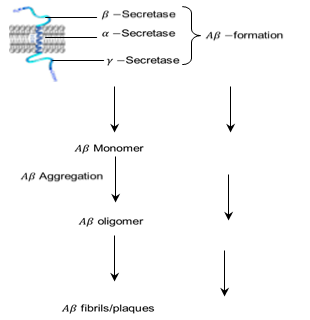Assessing the Efficacy of New Chemical Compounds in Treating Alzheimer's disease in Animal Models
Abstract
Alzheimer's disease (AD) is a severe condition that causes damage to the nervous system. The present approach of treating AD is inefficient at bringing the condition under long-term management and is also linked to a number of adverse consequences, including dyskinesia. The creation of non-dopaminergic remedies for AD aims to produce therapeutics that may alleviate motor deficiencies without running the risk of the chronic side effects connected with conventional dopaminergic drugs. One such target is the mGluR4 metabotropic glutamate receptor, which is now the focus of research. The possibility exists to propose mGluR4 activation as a new and promising therapy for Parkinson's disease. Additionally, applying a positive allosteric modulator to the orthosteric glutamate site rather than using direct acting agonists is seen to be a legitimate and effective therapy option for AD. The development of preclinical drugs has also benefited from the use of animal models. To evaluate a candidate compound's effectiveness, safety, and pharmacokinetics, animal testing can be done. Clinical trials on humans are being conducted as a result of promising results from therapeutic approaches that target A, tau, neuroinflammation, or other pathogenic characteristics. Additionally, non-pharmacological therapies that have shown cognitive advantages in AD models, including as exercise and environmental enrichment, have been examined in animal models.
References
Jebelli, J., Hamper, M.C., Van Quelef, D., Caraballo, D., Hartmann, J., Kumi-Diaka, J. and Kumi-Diaka, J.K., 2022. The potential therapeutic effects of low-dose ionizing radiation in Alzheimer's disease. Cureus, 14(3).
Wang, E.J., Wu, M.Y. and Lu, J.H., 2021. Ferulic acid in animal models of Alzheimer’s disease: A systematic review of preclinical studies. Cells, 10(10), p.2653.
Deshpande, P., Gogia, N. and Singh, A., 2019. Exploring the efficacy of natural products in alleviating Alzheimer’s disease. Neural regeneration research, 14(8), p.1321.
Poon, C.H., Wang, Y., Fung, M.L., Zhang, C. and Lim, L.W., 2020. Rodent models of amyloid-beta feature of Alzheimer’s disease: development and potential treatment implications. Aging and disease, 11(5), p.1235.
Luan, X., Zhang, L.J., Li, X.Q., Rahman, K., Zhang, H., Chen, H.Z. and Zhang, W.D., 2020. Compound-based Chinese medicine formula: From discovery to compatibility mechanism. Journal of ethnopharmacology, 254, p.112687.
Mullane, K. and Williams, M., 2019. Preclinical models of Alzheimer's disease: Relevance and translational validity. Current protocols in pharmacology, 84(1), p.e57.
Veening-Griffioen, D.H., Ferreira, G.S., van Meer, P.J., Boon, W.P., Gispen-de Wied, C.C., Moors, E.H. and Schellekens, H., 2019. Are some animal models more equal than others? A case study on the translational value of animal models of efficacy for Alzheimer's disease. European Journal of Pharmacology, 859, p.172524.
Peng, C., Wang, X., Li, Y., Li, H.W. and Wong, M.S., 2019. Versatile fluorescent probes for near-infrared imaging of amyloid-β species in Alzheimer's disease mouse model. Journal of Materials Chemistry B, 7(12), pp.1986-1995.
Morroni, F., Sita, G., Graziosi, A., Ravegnini, G., Molteni, R., Paladini, M.S., Dias, K.S.T., Dos Santos, A.F., Viegas Jr, C., Camps, I. and Pruccoli, L., 2019. PQM130, a Novel Feruloyl–Donepezil Hybrid Compound, Effectively Ameliorates the Cognitive Impairments and Pathology in a Mouse Model of Alzheimer’s Disease. Frontiers in Pharmacology, 10, p.658.
Zeiss, C.J., 2020. Utility of spontaneous animal models of Alzheimer’s disease in preclinical efficacy studies. Cell and tissue research, 380(2), pp.273-286.
Sharman, M.J., Gyengesi, E., Liang, H., Chatterjee, P., Karl, T., Li, Q.X., Wenk, M.R., Halliwell, B., Martins, R.N. and Münch, G., 2019. Assessment of diets containing curcumin, epigallocatechin-3-gallate, docosahexaenoic acid and α-lipoic acid on amyloid load and inflammation in a male transgenic mouse model of Alzheimer's disease: Are combinations more effective?. Neurobiology of Disease, 124, pp.505-519.
Saito, T., Hisahara, S., Iwahara, N., Emoto, M.C., Yokokawa, K., Suzuki, H., Manabe, T., Matsumura, A., Suzuki, S., Matsushita, T. and Kawamata, J., 2019. Early administration of galantamine from preplaque phase suppresses oxidative stress and improves cognitive behavior in APPswe/PS1dE9 mouse model of Alzheimer's disease. Free Radical Biology and Medicine, 145, pp.20-32.
Zhang, A.H., Sun, H., Yan, G.L., Han, Y., Zhao, Q.Q. and Wang, X.J., 2019. Chinmedomics: a powerful approach integrating metabolomics with serum pharmacochemistry to evaluate the efficacy of traditional Chinese medicine. Engineering, 5(1), pp.60-68.
Zhang, L., Chen, C., Mak, M.S., Lu, J., Wu, Z., Chen, Q., Han, Y., Li, Y. and Pi, R., 2020. Advance of sporadic Alzheimer's disease animal models. Medicinal research reviews, 40(1), pp.431-458.
Forny-Germano, L., De Felice, F.G. and Vieira, M.N.D.N., 2019. The role of leptin and adiponectin in obesity-associated cognitive decline and Alzheimer’s disease. Frontiers in neuroscience, 12, p.1027.







